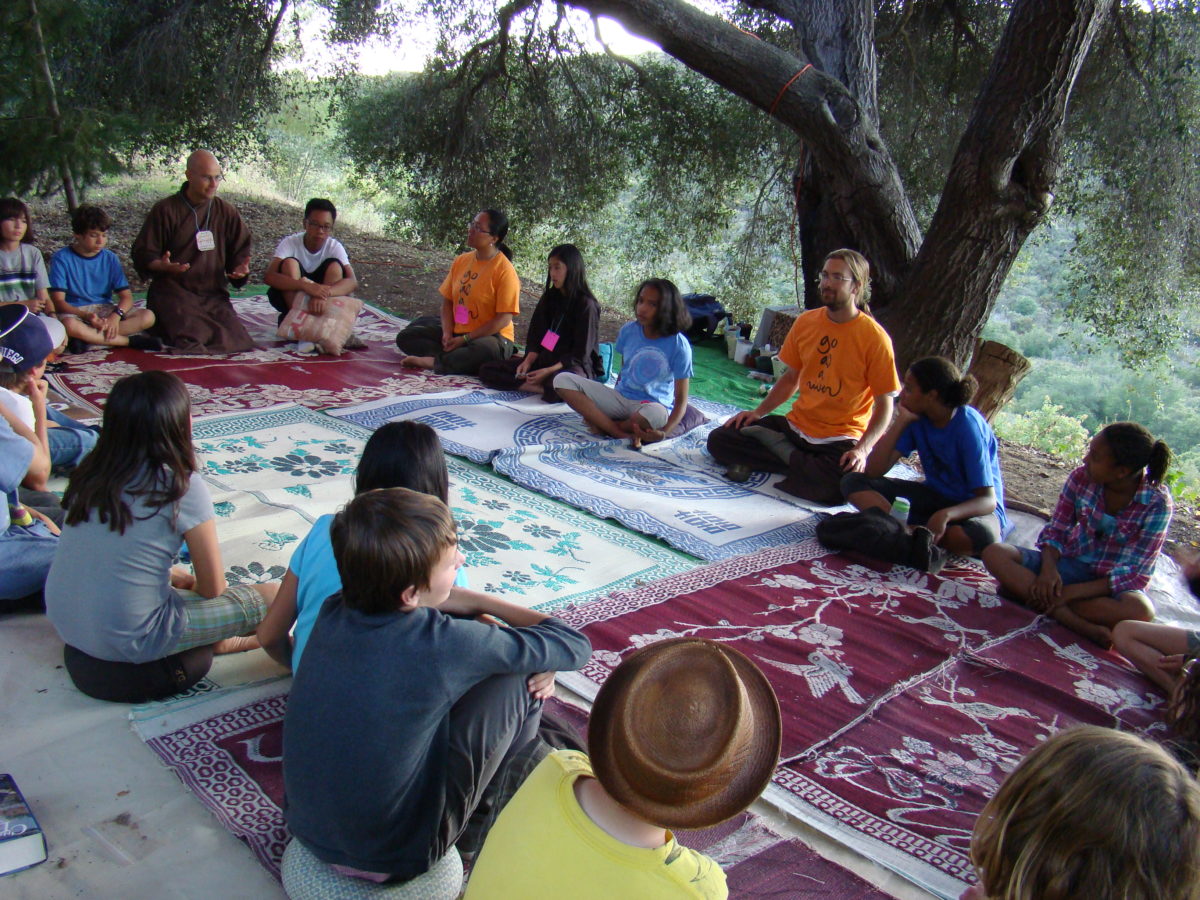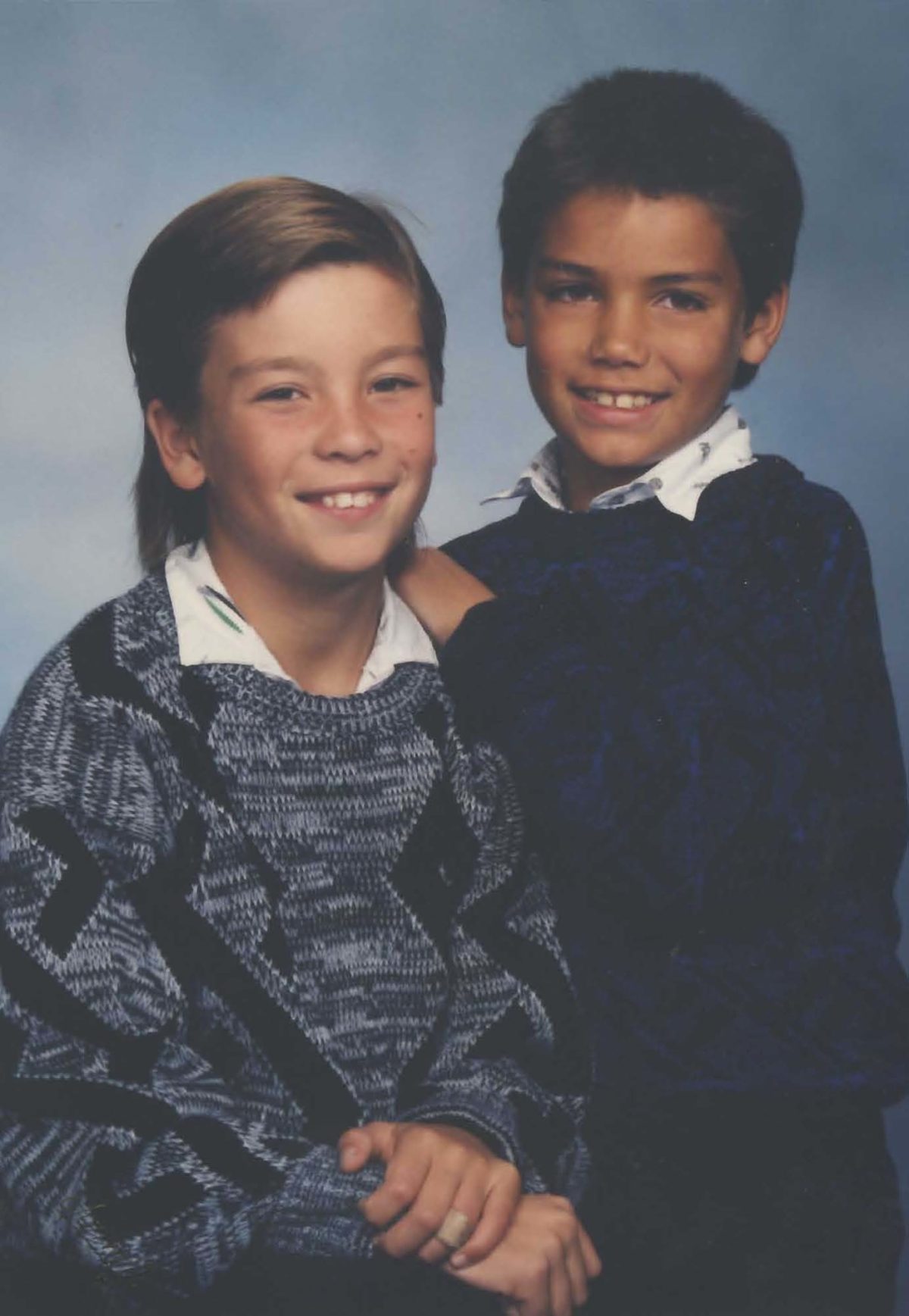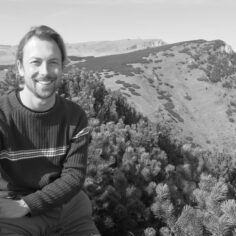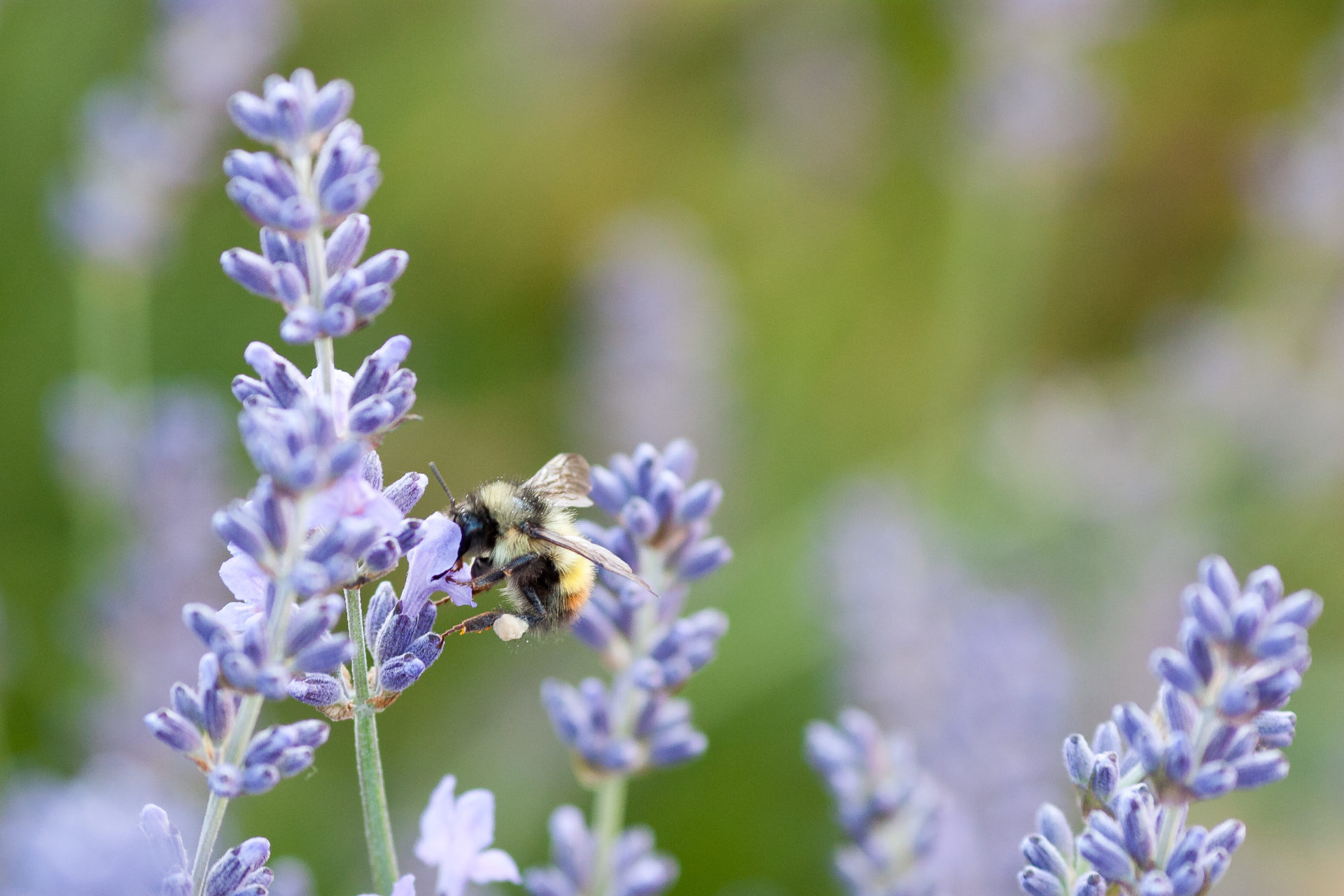By David Viafora in February 2012

My co-facilitator Joanna and I sat down under an arching oak tree, watching the sunset glowing on the chaparral hillside at Deer Park Monastery. It was our last meeting before the Compassionate Cougars, our children’s group, would arrive for a family retreat. There were still activities to plan, schedules to clarify,
By David Viafora in February 2012

My co-facilitator Joanna and I sat down under an arching oak tree, watching the sunset glowing on the chaparral hillside at Deer Park Monastery. It was our last meeting before the Compassionate Cougars, our children’s group, would arrive for a family retreat. There were still activities to plan, schedules to clarify, and roles to discuss, but we just enjoyed sitting silently, feeling the coastal breeze, and breathing with the mountain, allowing it to calm our spirits. Taking care of ourselves would be our most precious offering to the young ones coming up the mountain. We were healing the child inside each of us before they arrived, returning to the fresh air in our breaths, embraced by our father oak tree and nurtured by our mother mountain.
For five days before the retreat began, the children’s program staff spent time nourishing the child within, confident that this would be the best way to prepare for the arrival of more than 100 children and teens. We played games and shared our favorite animals, colors, and happiest childhood memories. We paired up and asked each other questions about our childhoods: Did you have braces? What was your favorite recess activity? What was a funny memory? Within a short time, this group of adults was giggling like third graders. The playfulness of childhood was returning to us.
Several days before the staff arrived, I journaled about my happy childhood memories. I felt surprised by the vast reserve of joyful memories that was available, and how my reflections brought joy, vitality, and gratitude to life within me. Yet I knew that if I wanted to connect deeply with my childhood, I couldn’t just hover over one end of the spectrum of experiences. To relate authentically with young people, I needed to embrace multiple dimensions of my own childhood, including the painful sides.
Don’t Throw Away Your Suffering
For me, developing the courage to embrace difficulty and pain has been a gift from Thay and from the Buddha. The Discourse on the Full Awareness of Breathing explains that one can first establish awareness of the breath and the body, and then allow feelings of joy and happiness to permeate one’s whole being. After this foundation of peace and joy is established, it is much easier to accept and embrace difficult feelings. Thay shares that when we allow painful feelings to rise up from the basement of our store consciousness to the living room of our mind consciousness, the feelings can be recognized and healed. It is healthy to allow them to circulate in our consciousness and to be tenderly embraced by our loving attention. Thanks to these teachings, I’ve found that mindfully journaling about both joyful and difficult experiences can bear fruit. One memory stood out very clearly as I allowed my mind to survey the later childhood years. While I recognized my fear and hesitation to reflect on it, I could hear Thay’s soft voice inside of me, saying, “Don’t throw away your suffering; take good care of it. Your happiness and compassion depend on it.”
As a third, fourth, and fifth grader, I was often teased by students who were older, physically stronger, and socially influential. When I was in sixth grade, however, I had greater social standing and was also quite physically strong. Once, I was on the playground near groups of boys and girls in my class. Another boy was playing by himself near a tree. I thought that it would impress the other boys and girls if I showed I was tougher than he was, so I started making fun of him. I could intimidate him because he was less physically strong and had less social standing than I did. My intention was not to hurt the boy, but I thought picking on him would make me look cool in front of the others. He seemed to be ignoring me, but it’s difficult to know how much that experience affected him.
Even though it happened so long ago, I found it difficult to accept what I had done. I questioned, “Where was my heart at that time? How could I have treated him so insensitively and without care for his feelings?” These became koans that I worked with during the family retreat. The memory was difficult to embrace. However I also felt some goodness in the reflection, knowing that I was beginning to accept sides of myself that I did not want to acknowledge before.
Our staff had an opportunity to share about our childhood experiences. When it was my turn, I shared my happiest childhood memories, and then let down my guard and shared the difficult memory. I recognized feelings of shame and sadness arising. I felt the deep listening and acceptance of my monastic elder brother and the group. Yet toward the end of my sharing, I looked at the others, and they were all looking downward. I thought, “Oh no, I’ve shared too much suffering, and perhaps too early for this group of fairly new staff. I’m supposed to be coordinating the Children’s Program this year, and now they may be questioning my integrity and capacity as a leader.” I had confidence in the Sangha’s deep support for me, but questioned if it had been the right time to share this childhood suffering.
I tried to keep an open mind, so I could learn from whatever the experience had to teach me. The next morning, I did a love meditation for myself and touched the earth, allowing the karma of my past and my ancestors to be released. Touching the earth helped me to understand how I inherited both beautiful and wholesome ways of being, as well as unwholesome and harmful ways from my ancestors—especially my land ancestors—when I was young. Since then, I have been working to transform them.
I reflected on the causes and conditions that allowed the painful interaction to happen. It was not an isolated incident, but rather a pattern of behaviors that took many forms. I was a victim of much bullying and teasing during the third, fourth, and fifth grades. I felt inferior to others as they treated me unkindly to raise their own feelings of power and superiority. The school culture had a strong effect on me. I received a transmission of unkindness and domination, which I then transmitted to children who were less socially and physically strong than me. Being bullied and bullying others appeared as two sides of the same coin. Understanding myself as a victim, it became easier to understand and forgive myself for what I had done. Understanding myself as a bully, it was easier to forgive and understand those who treated me this way.
Two Ways of Being Popular
During the family retreat, I read the children a story called “How to Make Friends” by Robert Aitken, a pioneering American Zen master. Mr. Aitken shared about a time when he was a nerdy, scrawny young kid with glasses. One day at school, he tried to say something to a group of boys he admired. The head boy teased the young Robert while the other boys laughed. At the time, Robert hated those boys. Later, he understood that the boy probably acted that way to feel important in front of others. Mr. Aitken explained that there are two ways of being popular: the fake way and the true way. The fake way is when you make others afraid of you by talking about them and being rude to them. A truly popular person, however, tries to be decent and kind to everyone. He becomes popular because everyone feels safe to be themselves around him. Mr. Aitken wrote that if one person can be truly popular and decent to everyone, the entire school can change, because treating others in this way can be contagious.
After the young Cougars heard the story, silence pervaded, even among the loud and rowdy kids. They were touched because the story resonated with the stories of their own lives. One by one, the children started sharing personal experiences of being around fake popular kids, and how it felt to be teased. One boy shared that he often hung out with the fake popular kids because he felt safer. He said they wouldn’t hassle him when he was on their side. He admitted that it was sad to see other kids treated unkindly. A very kind and mature girl disclosed that she often hung out with fake popular kids and felt a sense of power. She did not feel as afraid when she was with them. In the past, she had been called a nerd for being smart, and although she shrugged it off, it was still difficult to be treated that way. Others shared that being teased or hassled was a part of everyday life at school for them.
As the children shared, a strong bond of sympathy and understanding naturally arose in the group. They seemed to understand each others’ suffering, despite being at different schools. This manifested strongly during one boy’s sharing. The boy was very talented in playing with a yo-yo. He recounted a time when he was yo-yo-ing at school, and some kids walked by and called him a freak. It was a visibly painful experience for him. The other Cougars were silent after he shared, and I could feel them listening deeply and sympathizing. After the silence, kids began to offer their support: “Oh, no way! I’m sure they’re just jealous of you. It’s because you are so awesome!”
This boy had a chance to share his yo-yo skills with our group, and he received a lot of positive affirmations; the other kids and facilitators were really impressed! Later in the retreat, many of the kids encouraged him to present his yo-yo skills during the performance night. They enthusiastically offered their support: “Yeah, we got your back. We’ll cheer you on and say, ‘Yep, he’s in my family.’” They told him, “We’d be proud of you.” His past suffering was visibly transformed in the present, as he felt the love of his friends and community.
Loving the Victim and the Bully
A few of the children had been coming to Deer Park regularly for several years. I asked them to share about how they dealt with teasing and bullying. One boy shared that in the past, kids would try to tease him, and although he didn’t like it, he just ignored them. Once, he simply told them, “Can you please stop it?” He continued to ignore them and they stopped trying to pick on him. Another girl shared that a few years before, she had recognized that there were true friends and fake friends in her social group. When one person was gone, others would say unkind things about that person. She was afraid of how they would talk about her. She stopped contributing to the behavior, and then others stopped as well. She moved on and developed different friendships that she could count on.
Despite our past failed attempts to hold discussions with the Cougars for more than fifteen minutes, this discussion lasted over an hour and fifteen minutes. They spoke with the sincerity and wisdom of adults, because the topic was so real to their lives. The concentration in the group was solid. I listened, enthralled by the authenticity and depth of their sharing. They had a very safe and open space to share. I could understand the children who shared their buried feelings of frustration and pain as victims of bullying. And I could also listen with empathy to those who were initiating such unkindness toward their peers. I had been the victim and I had been the bully, and I lovingly accepted each of those sides of myself. So now I could really be one with each of the children.
The children produced a collective insight that kids who were bullying and popular in the fake way were suffering themselves. I shared with the children that bullies hurt others because they may have been hurt in the past, and they learned to do that to others; they hadn’t had an opportunity to grow enough love in their hearts. I shared with the children, yet I was also sharing with the eleven-year-old within me. I was answering my koan: “How could I have acted in an unkind way toward that poor boy? Where was my heart at that time?” Listening to the children’s deep sharing allowed the child inside of me to heal again. Now, from time to time, I send a prayer of lovingkindness to the boy on the playground. I don’t know if he will receive it, yet I trust that we will meet again, perhaps in different forms. And I feel his smile for that, because now we can be friends again.
After the retreat, I checked in with a few of my fellow staff brothers and sisters. “May I ask for your feedback about what I shared that evening about my childhood? Do you think that I was sharing too much raw suffering for the group at that time?” They looked at me, surprised, and said that it felt like the right thing for me to share. One very sweet sister said, “David, I thought it was very courageous of you to share that part of your childhood. I was only looking down because I was remembering my own bullying behavior as a kid. Boy, I was really a bully back then.” I was so surprised. We both laughed and smiled at our eleven-year- old selves.



